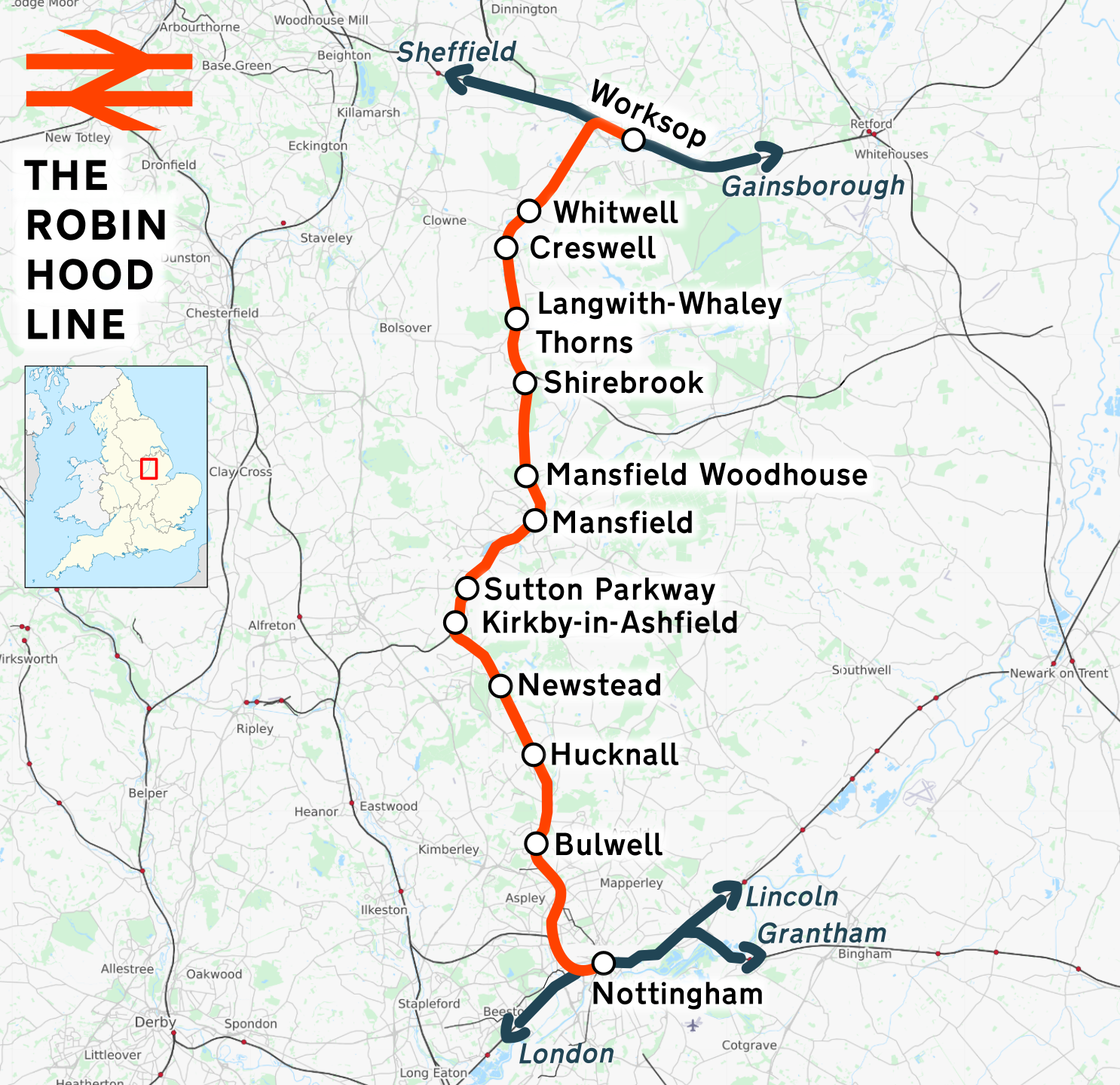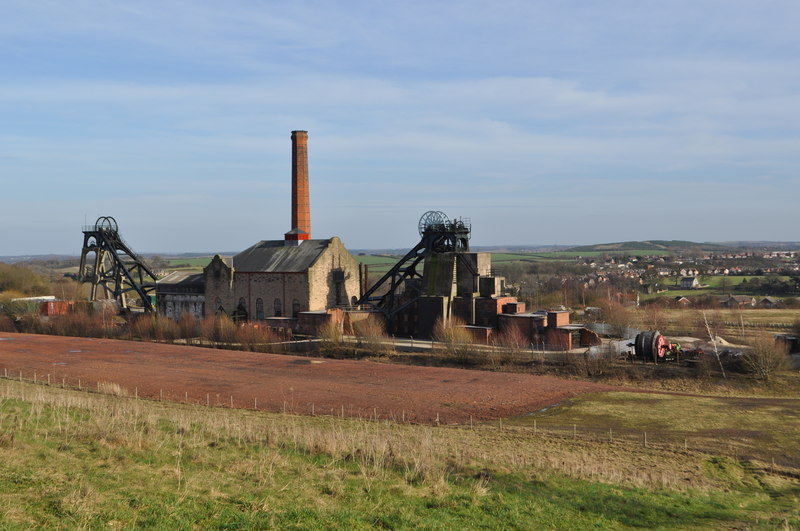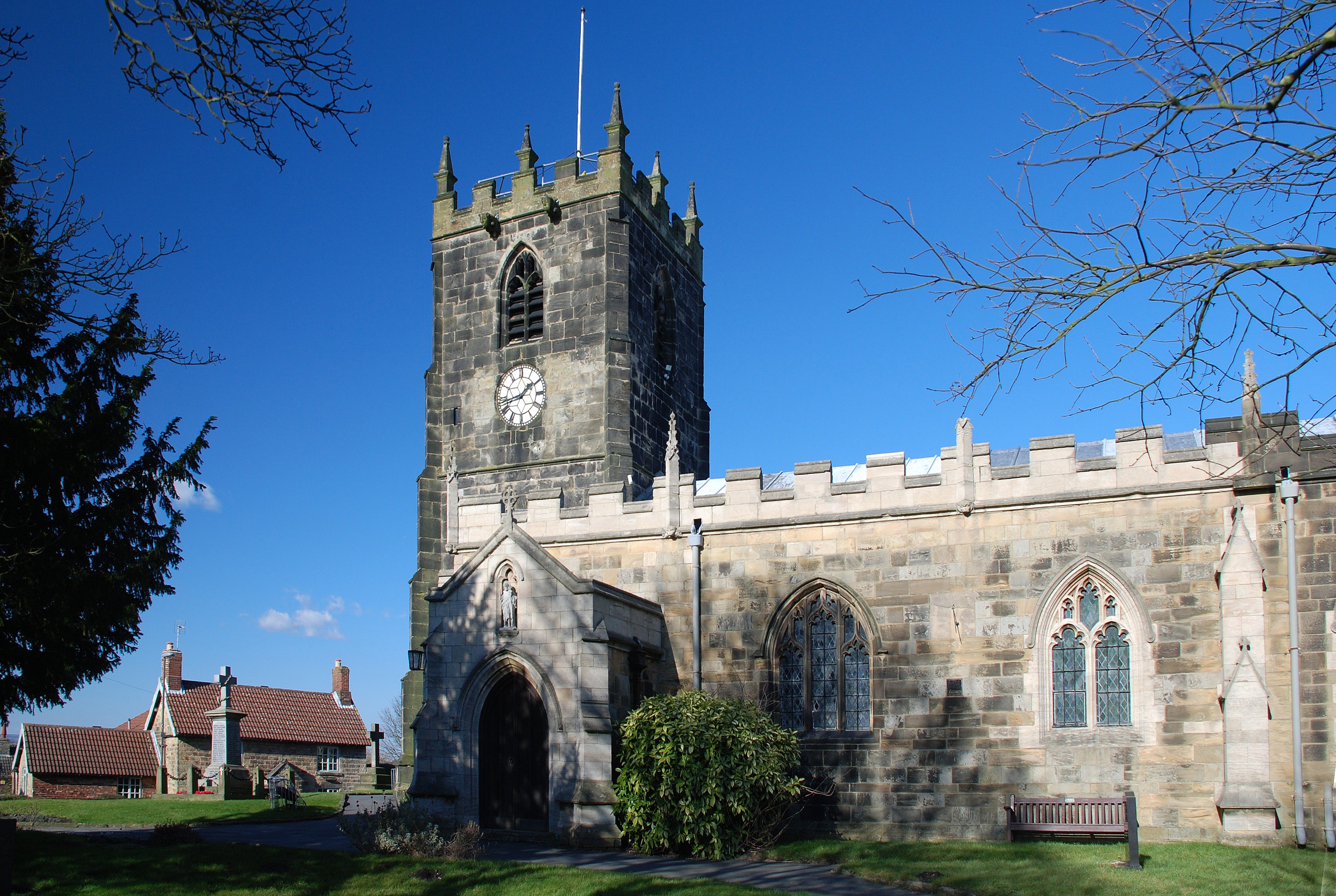|
Teversall Manor Railway Station
Teversall Manor is a former railway station in Teversal, Nottinghamshire on the Derbyshire border west of Mansfield. History There were two stations in Teversal, one built by the Midland Railway on a line running south–north from Whiteborough to Pleasley West, the other by built the Great Northern Railway at the end of a one-mile branch line westwards from Skegby. Despite being fully equipped with a building and platform, the Great Northern station only ever carried unadvertised workmen's trains and seaside excursions. It does not appear in the 1922 " Bradshaw's Guide" or later timetables. It was visited by a Stephenson Locomotive Society "Farewell" enthusiasts' special on 4 May 1968. The ex-Midland line bridged the ex-GNR line in Teversal and the stations were fairly close to each other, the ex-Midland station being on the higher level. From inception they were both called "Teversall" with two "l"s. After nationalisation in 1948 the early British Railways had a policy o ... [...More Info...] [...Related Items...] OR: [Wikipedia] [Google] [Baidu] |
Ashfield, Nottinghamshire
Ashfield () is a local government district in Nottinghamshire, England. The population of Ashfield was 127,200 in 2018. The district is mostly urban and forms part of both the Nottingham and Mansfield Urban Areas. There are three towns in the district; Sutton-in-Ashfield, Kirkby-in-Ashfield and Hucknall. The district was formed on 1 April 1974, under the Local Government Act 1972, by the merger of urban districts of Hucknall, Kirkby-in-Ashfield, Sutton-in-Ashfield and parts of Basford Rural District, namely the parishes of Annesley, Felley and Selston. The largest settlement is Sutton-in-Ashfield. Towns and villages in the district include the following: * Annesley * Annesley Woodhouse * Hucknall * Huthwaite * Jacksdale * Kirkby-in-Ashfield * Selston * Skegby * Sutton-in-Ashfield * Stanton Hill * Teversal * Underwood Politics Elections to the district are held every 4 years, with currently 35 councillors being elected from 23 wards. Since 2018 the council has been l ... [...More Info...] [...Related Items...] OR: [Wikipedia] [Google] [Baidu] |
Westhouses
Westhouses is a village within Derbyshire, situated close to the town of Alfreton. It is in the Bolsover district of the county. It is in the civil parish of Blackwell. Named after West House Farm, the settlement was founded in the 1870s. Railway The Midland Railway (later the London, Midland and Scottish Railway) was the main employer and landowner. Many roads such as Allport Terrace, Bolden Terrace and Pettifer Terrace were named after Midland Railway directors, and the school was also built and maintained by the company. Most of the houses were two up and two down, with an outside toilet in the back yard, although the engine drivers' houses were bigger. They did not have mains electricity until the early 1957 and were owned by the Midland Railway, later by the British Railways Board until about 1969. There should have been 100 houses by the school but only 75 were built, stopping at 2, Bolden Terrace, apparently making it a semi-detached house by accident. However, th ... [...More Info...] [...Related Items...] OR: [Wikipedia] [Google] [Baidu] |
Railway Stations In Great Britain Opened In 1886
Rail transport (also known as train transport) is a means of transport that transfers passengers and goods on wheeled vehicles running on rails, which are incorporated in tracks. In contrast to road transport, where the vehicles run on a prepared flat surface, rail vehicles (rolling stock) are directionally guided by the tracks on which they run. Tracks usually consist of steel rails, installed on sleepers (ties) set in ballast, on which the rolling stock, usually fitted with metal wheels, moves. Other variations are also possible, such as "slab track", in which the rails are fastened to a concrete foundation resting on a prepared subsurface. Rolling stock in a rail transport system generally encounters lower frictional resistance than rubber-tyred road vehicles, so passenger and freight cars (carriages and wagons) can be coupled into longer trains. The operation is carried out by a railway company, providing transport between train stations or freight customer facil ... [...More Info...] [...Related Items...] OR: [Wikipedia] [Google] [Baidu] |
Former Midland Railway Stations
A former is an object, such as a template, gauge or cutting die, which is used to form something such as a boat's hull. Typically, a former gives shape to a structure that may have complex curvature. A former may become an integral part of the finished structure, as in an aircraft fuselage, or it may be removable, being using in the construction process and then discarded or re-used. Aircraft formers Formers are used in the construction of aircraft fuselage, of which a typical fuselage has a series from the nose to the empennage, typically perpendicular to the longitudinal axis of the aircraft. The primary purpose of formers is to establish the shape of the fuselage and reduce the column length of stringers to prevent instability. Formers are typically attached to longerons, which support the skin of the aircraft. The "former-and-longeron" technique (also called stations and stringers) was adopted from boat construction, and was typical of light aircraft built until the ad ... [...More Info...] [...Related Items...] OR: [Wikipedia] [Google] [Baidu] |
Robin Hood Line
The Robin Hood Line is a railway line running from Nottingham to Worksop, Nottinghamshire, in the United Kingdom. The stations between Shirebrook and Whitwell (inclusive) are in Derbyshire. Passenger services are operated by East Midlands Railway. The line in its present form opened to passengers in stages between 1993 and 1998. Following the Beeching cuts of the 1960s, the line had been freight-only. The cuts had left Mansfield as one of the largest towns in Britain without a railway station. History The majority of the current Robin Hood Line re-uses the former Midland Railway (MR) route from Nottingham to Worksop. However, due to rationalisation leading to track removal in order to save the costs of maintaining the tunnel north of Annesley, the through route was severed in the 1970s. Northwards from Nottingham, the freight-only line remained intact as far as Newstead, where it had served the now closed Newstead Colliery. Southwards from Worksop, the line followed the ... [...More Info...] [...Related Items...] OR: [Wikipedia] [Google] [Baidu] |
Pleasley Colliery
Pleasley Colliery is a former English coal mine. It is located to the north-west of Pleasley village, which sits above the north bank of the River Meden on the Nottinghamshire/Derbyshire border. It lies 3 miles (4.8 km) north of Mansfield and 9 miles (14.5 km) south of Chesterfield. From the south it commands a prominent position on the skyline, although less so now than when the winders were in operation and both chimney stacks were in place. The colliery is situated at about 500 ft (152m) above sea level and is aligned on a NE–SW axis following the trend of the river valley at this point. After closure of the colliery in 1986, most of the surface infrastructure was demolished and what remains are the two headstocks which stood above the shafts, the engine-house complex, containing the two steam winders which were used to raise the coal, one dating from 1904 and the other from 1922, and one of the 40 m high brick chimneys which served the steam ... [...More Info...] [...Related Items...] OR: [Wikipedia] [Google] [Baidu] |
Alfreton
Alfreton ( ) is a town and civil parish in the Amber Valley district of Derbyshire, England. The town was formerly a Norman Manor and later an Urban District. The population of the Alfreton parish was 7,971 at the 2011 Census. The villages of Ironville, Riddings, Somercotes and Swanwick were historically part of the Manor and Urban District, and the population including these was 24,476 in 2001. History Alfreton is said to have been founded by King Alfred and to have derived its name from him. The placename appears in different forms throughout the ages, such as 'Elstretune' in Domesday, but the earliest record appears to occur in CE1004 in the will of Wulfric Spott, the founder of Burton Abbey. Amongst his bequests was 'Aelfredingtune', or 'Alfred's farmstead', which is believed to relate to Alfreton. However, there is no evidence that this Alfred was the aforementioned king. To the southwest near Pentrich was a Roman fortlet on the major road known as Ryknield Street. Anothe ... [...More Info...] [...Related Items...] OR: [Wikipedia] [Google] [Baidu] |
Pleasley West Railway Station
Pleasley West was a railway station on the Doe Lea line in Pleasley, Derbyshire, England on the border of Derbyshire and Nottinghamshire. It opened in 1886 and closed to scheduled services in 1930, though it was served by excursion trains until 1964. Context The station was built by the Midland Railway near the junction of the circuitous to Westhouses via line known as "The Teversall & Pleasley Branch" and the equally circuitous to Pleasley line known as the Doe Lea Branch because it ran for much of its length along the valley of the River Doe Lea. The railways always spelt Teversal as "Teversall", most other sources use "Teversal." In this article Teversall is used for railway items, and Teversal otherwise. History The station was opened without ceremony on 11 May 1886 when the Teversall & Pleasley Branch opened to passenger traffic. It initially provided a service of four trains each way between Mansfield and Alfreton via Mansfield Woodhouse, Teversal and Tibshelf, t ... [...More Info...] [...Related Items...] OR: [Wikipedia] [Google] [Baidu] |
Tibshelf
Tibshelf is a village and civil parish in the Bolsover District in Derbyshire, England. Located between the towns of Clay Cross, Shirebrook, Mansfield and Chesterfield. It had a population at the 2001 UK census of 3,548, increasing to 3,787 at the 2011 Census. Tibshelf shares its boundaries with the villages of Morton, Pilsley, Newton, Teversal and Hardstoft. The village was the site of the UK's first inland oil well. In the 19th century, coal was discovered, coal mining overtook agriculture as the primary industry in the area, and a local railway system was developed. Two deep mines were sunk, but were under threat of closure for a number of years after a partial cave-in. Culture and community Tibshelf has since redeveloped itself into a popular place to live, in part due to its location near the M1 motorway (Tibshelf services was originally named Chesterfield Services, but was rebranded due to being closer to Tibshelf, and after pressure from the local authorities) and its ... [...More Info...] [...Related Items...] OR: [Wikipedia] [Google] [Baidu] |
Mansfield Woodhouse Railway Station
Mansfield Woodhouse railway station serves the settlement of Mansfield Woodhouse, which adjoins the town of Mansfield, both located in Nottinghamshire, England. The station is on the Robin Hood Line between Nottingham and Worksop. It was originally closed in 1964 but was reopened in 1995. History The original station was opened for goods traffic in April 1875 and for passenger traffic on 1 June 1875 when the Midland Railway built a branch line from Mansfield to Worksop. Stations were erected at Mansfield Woodhouse, Shirebrook, Langwith, Cresswell and Whitwell. They were all built of stone except for the one at Mansfield Woodhouse, which was built entirely in wood. Stationmasters *Joseph Harrison 1875 – 1899 (formerly station master at Stretton) *Frederick Mason 1899 – 1923 (formerly station master at Burton Joyce) Branch line A branch line veered west approximately half a mile north of the station. This single track line, known as "The Pleasley extension", ran through P ... [...More Info...] [...Related Items...] OR: [Wikipedia] [Google] [Baidu] |
Mansfield Railway Station (England)
Mansfield railway station is a railway station which serves the town of Mansfield in Nottinghamshire, England. Alternatively it is named Mansfield Town, to distinguish itself from the GCR's former Mansfield Central and Mansfield Woodhouse's station. The station is north of Nottingham on the Robin Hood Line, and is managed by East Midlands Railway. The station building is Grade II listed. History The town was originally the terminus of the Mansfield and Pinxton Railway, built in 1819. It was bought by the Midland Railway, which used the final section to extend its new Leen Valley line to the present station in 1849. The station opened for passenger traffic without ceremony on Tuesday 9 October 1849. The line suffered from some teething problems in its early days. The ''Derby Mercury'' of 24 October 1849 criticised the quality of construction noting that: engines have been off the line in the station yard at Mansfield several times since the opening on Tuesday week. The curves ... [...More Info...] [...Related Items...] OR: [Wikipedia] [Google] [Baidu] |







